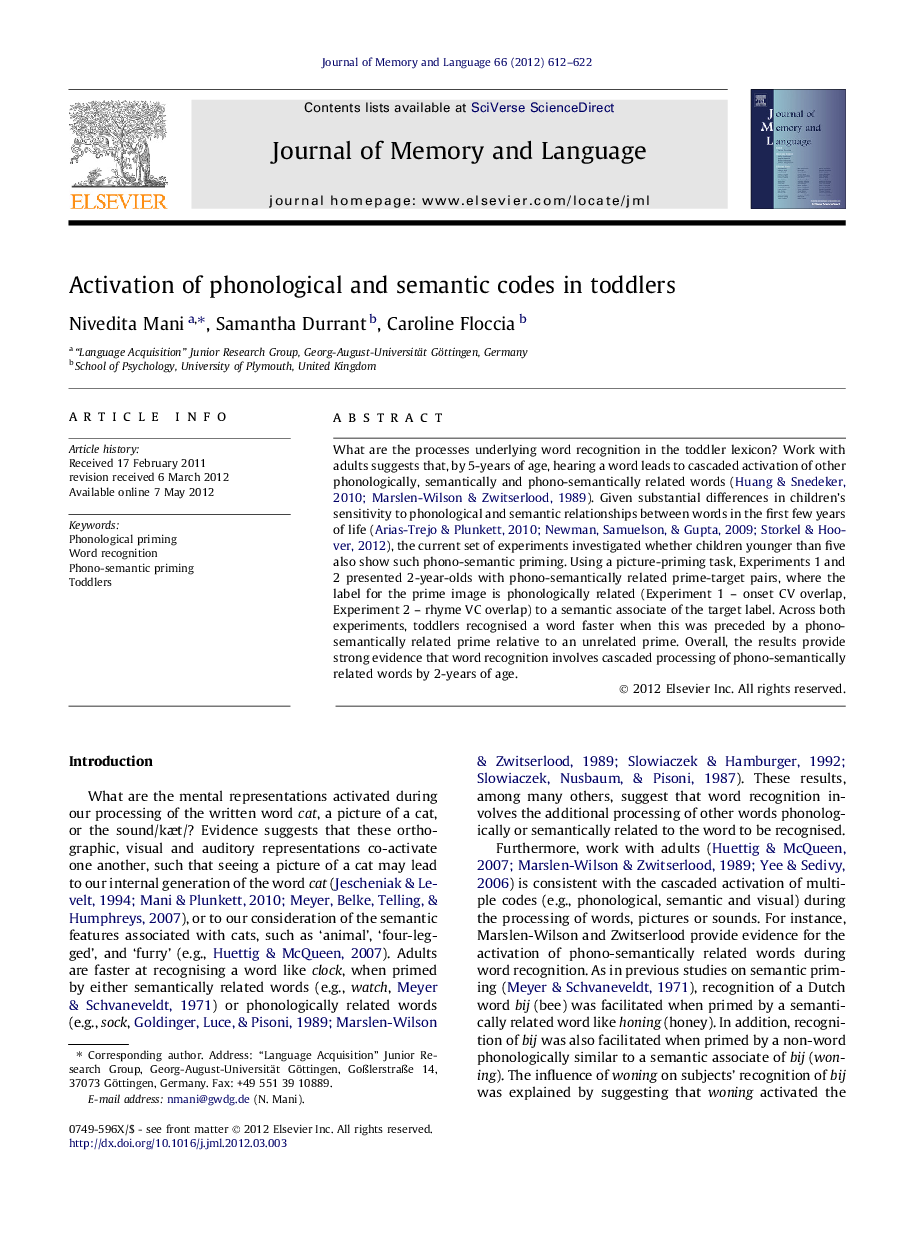| Article ID | Journal | Published Year | Pages | File Type |
|---|---|---|---|---|
| 931937 | Journal of Memory and Language | 2012 | 11 Pages |
What are the processes underlying word recognition in the toddler lexicon? Work with adults suggests that, by 5-years of age, hearing a word leads to cascaded activation of other phonologically, semantically and phono-semantically related words (Huang and Snedeker, 2010 and Marslen-Wilson and Zwitserlood, 1989). Given substantial differences in children’s sensitivity to phonological and semantic relationships between words in the first few years of life (Arias-Trejo and Plunkett, 2010, Newman et al., 2009 and Storkel and Hoover, 2012), the current set of experiments investigated whether children younger than five also show such phono-semantic priming. Using a picture-priming task, Experiments 1 and 2 presented 2-year-olds with phono-semantically related prime-target pairs, where the label for the prime image is phonologically related (Experiment 1 – onset CV overlap, Experiment 2 – rhyme VC overlap) to a semantic associate of the target label. Across both experiments, toddlers recognised a word faster when this was preceded by a phono-semantically related prime relative to an unrelated prime. Overall, the results provide strong evidence that word recognition involves cascaded processing of phono-semantically related words by 2-years of age.
► Processes underlying word recognition by toddlers. ► Evidence of the phono-semantic priming in 2-year-olds. ► Evidence of influence of phonological overlap in word recognition. ► Word recognition in toddlers involves processing of related words.
